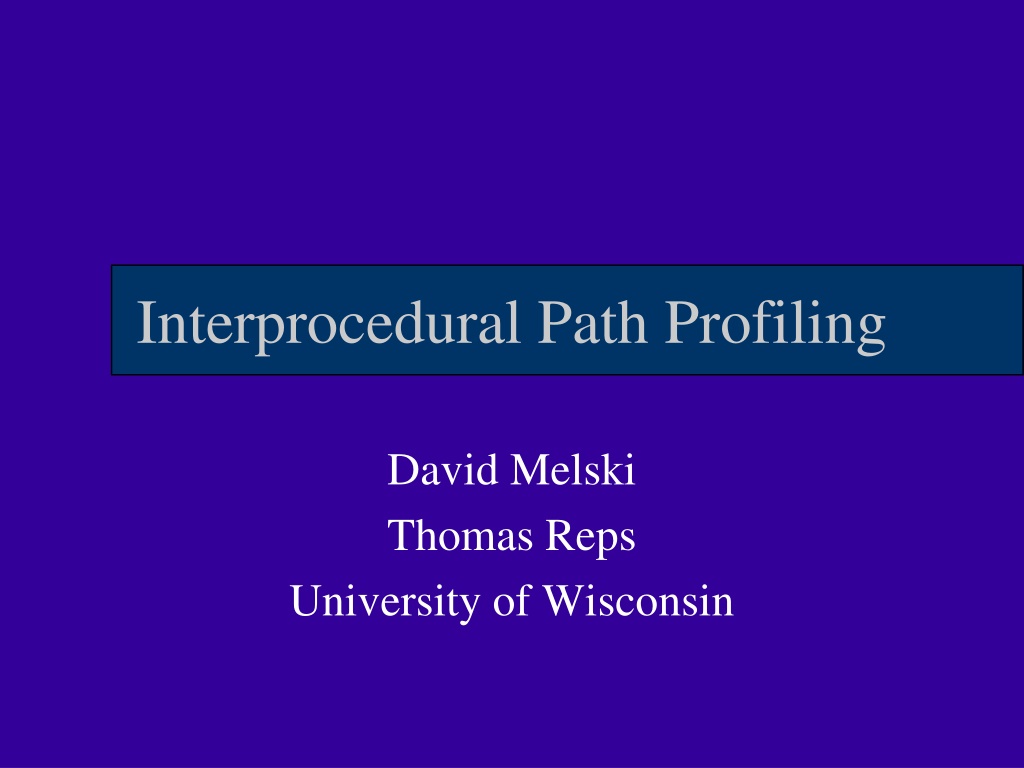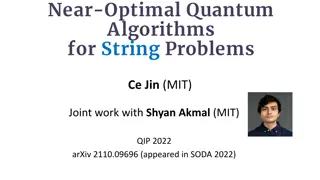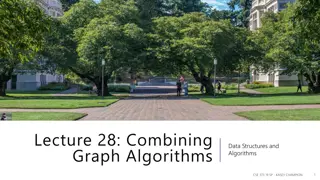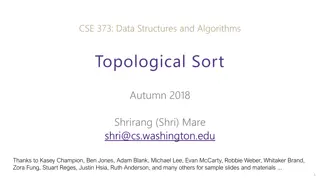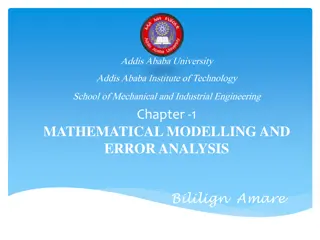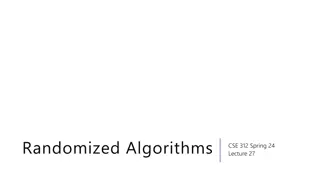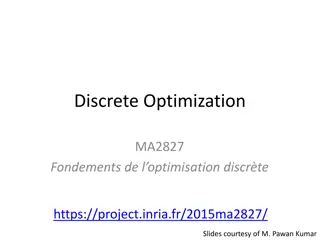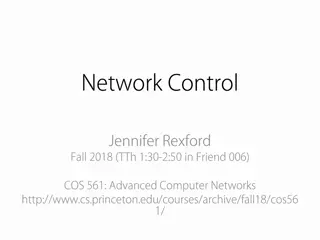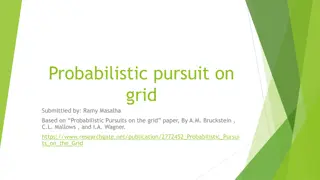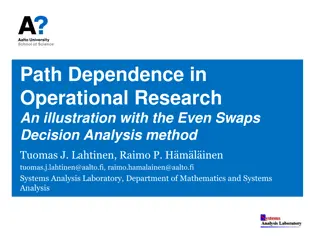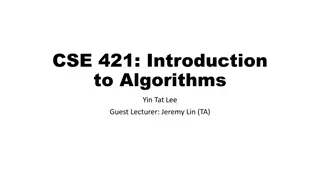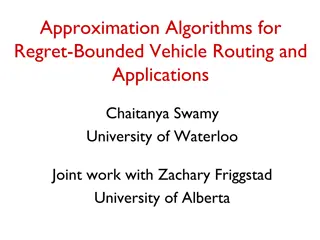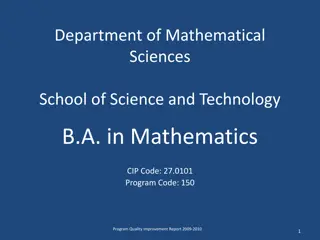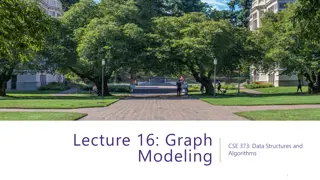Shortest Path Problem: Mathematical Principles & Algorithms
Delve into the complexities of the Shortest Path Problem, exploring its mathematical formulation, dual aspects, algorithmic validations, and applications. From understanding the fundamentals of SPP to dissecting Dijkstra's Algorithm, this content synthesizes theoretical foundations with practical implementation strategies.
Download Presentation

Please find below an Image/Link to download the presentation.
The content on the website is provided AS IS for your information and personal use only. It may not be sold, licensed, or shared on other websites without obtaining consent from the author.If you encounter any issues during the download, it is possible that the publisher has removed the file from their server.
You are allowed to download the files provided on this website for personal or commercial use, subject to the condition that they are used lawfully. All files are the property of their respective owners.
The content on the website is provided AS IS for your information and personal use only. It may not be sold, licensed, or shared on other websites without obtaining consent from the author.
E N D
Presentation Transcript
Interprocedural Path Profiling David Melski Thomas Reps University of Wisconsin
Introduction What is path profiling? Counts the number of times particular path fragments are executed Our work: extensions of Ball-Larus New interprocedural techniques New intraprocedural techniques
Applications Program Optimization Path-qualified dataflow analysis (Ammons, Larus) Software Maintenance Path spectra (Reps et al.) Oddball paths Debugger applications
Ball-Larus Tech. Remove cycles Add surrogate edges Remove backedges Left with a DAG: have a finite number of acyclic paths
Ball-Larus Tech. Label each vertex v with numPaths[v], (the number of paths from v to Exit.) Use bottom-up traversal
Ball-Larus Tech. Label edges such that: For each path p, p s path number the sum of p s edges is a unique value pathNum = 0 pathNum = 1 pathNum = 2 pathNum = 3
Ball-Larus Tech. Add Instrumentation: Var. pathNum Example: start w/ pathNum=0 pathNum+=0 (pathNum=0) pathNum+=0 (pathNum=0) pathNum+=0 (pathNum=0) pathNum+=0 (pathNum=0) pathNum+=0 (pathNum=0) Profile[pathNum] ++ pathNum=2
Introductory Example (main) int main() { double t, result = 0.0; int i = 1; while( i <= 18 ) { if( (i%2) == 0 ) { t = pow( i, 2 ); result += t; } if( (i%3) == 0 ) { t = pow( i, 2 ); result += t; } i++; } return 0; } 9 6 j k + 2 2 ( 2 ) ( 3 ) j k = = 1 1
Supergraph G* Unique vertices Entryglobal and Exitglobal CFG for each procedure P Unique EntryP and ExitP call and return-site vertices for each procedure call call-edges and return-edges connect calls to procedures
Invalid Path Example Do not want to consider invalid paths for profiling
Entry g l o b a lExit g l o b a l Valid Paths ) ( main Label interprocedural edges with parens Don t accept paths with mismatched parens Invalid: ( {]) Same-Level: ( { } ) Unbalanced-Left: ( { { } ] [ pow
Interprocedural Cycles Complicates interprocedural profiling
Creating G*-fin Modify G*: In each procedure: Add Gexit Remove Backedges (Removes cycles in control-flow graphs) u6: Gexitpow Exit_global
Entry g l o b a lExit g lo b a l main Creating G*-fin Modify G* (cont): Remove recursive edges (Removes cycles in call graph) R
Observable Paths In G*-fin: A finite number of unbalanced-left paths. Each unbalanced-left path defines an observable path an item that we log in a profile. (observable paths are unbalanced-left because they may end in the middle of a procedure)
Entryg l o b a lExitg l o b a l Context-Prefix and Active-Suffix S Each path has a context-prefix an active-suffix a counter The counter counts the executions of the active-suffix in the context of the context- prefix R Q
Overview: Instrumentation Each procedure Q takes additional parameters: pathNum (passed by reference) numPathsExitQ (passed by value) On a procedure call to Q from P, calculate numPathsExitQ for current context: numPathsExitQ = r(numPathsExitP)
v6: Call pow Overview: Instrumentation E.g., Function call: numPathsExitPow = r(numPathsExitMain) pathNumOnEntryPow = pathNum u6: Gexitpow v7: Rtn pow ?= ??.5
v6: Call pow Overview: Instrumentation E.g., Edge Traversal: pathNum += e(numPathsExitPow) u6: Gexitpow v7: Rtn pow
v6: Call pow Overview: Instrumentation ??.? + 1 E.g., Backedge Traversal: pathNum += e(numPathsExitPow) Profile[pathNum] ++ ??.0 pathNum = pathNumOnEntryPow pathNum += e(numPathsExitPow) u6: Gexitpow v7: Rtn pow
Assigning functions Solve the following equations: = = = = . Exit vertex GExit vertex Call vertex to Q with return vertex Otherwise x x x . 1 Exit P GExit P c r Entry succ( ) c r Q v v w w + = x f x . ( ) + g x ( ) f g
v6: Call pow ???? Assigning call functions ????? numPaths[ExitPow] = rtn(numPaths[ExitMain]) numPaths[EntryPow] = entry( rtn(numPaths[ExitMain]) numPaths[Call] = entry( rtn(numPaths[ExitMain]) call = entry rtn u6: Gexitpow v7: Rtn pow ???
Discussion Relationship of functions to Interprocedural DFA (e.g., Sharir and Pnueli s functions): Otherwise = v w w v succ( ) = = = . Exit vertex GExit vertex Call vertex to Q with return vertex c x x x . 1 Exit P GExit P r Entry c r Q = . Exit verte x x x Exit P = Call vertex with Q to c return ver tex r Entry c r Q = Otherwise v w succ( ) w v
Conclusion Interprocedural Context Path Profiling still some difficulties: Doubly exponential observable paths (but can prune paths) instrumentation is somewhat more costly ( 2 ops per edge instead of 1) Need static analysis to find and functions
Conclusion Developed a toolkit of path-profiling techniques: Interprocedural vs. intraprocedural Edge functions vs. edge values Context vs. piecewise
Possible Approaches Remove most call-edges and return-edges Inline every non-recursive procedure Duplicate every non-recursive procedure Parameterize instrumentation in each procedure to behave differently for different contexts
Handling Recursion Assign values to each edge Entryglobal EntryRi: = 0 if 0 i ) 1 ( j otherwise Entry j i R
Handling Recursion Before a recursive call to R: save pathNum (in pathNumBeforeCall) set pathNum to value on Entryglobal EntryR After a recursive call update profile with pathNum restore pathNum to pre-call value (from pathNumBeforeCall)
Theory: Context-Free DAGs Let L be a context-free language over Let G be a directed graph whose edges are labeled with members of A path in G is an L-path if its word is in L (L,G) is a context-free DAG if the number of L-paths through G is finite
Interprocedural Piecewise Profiling Modification of context profiling: For each procedure P: Add the vertex GEntryP Add the edge Entryglobal GEntryP Replace each surrogate edge EntryP v with GEntryP v Use Unbalanced-Right-Left paths in G*-fin (must handle unbalanced-right paths)
Other Techniques Intraprocedural context path profiling Context indicates the path taken to a loop header Hybrid techniques Exploit parameterization of the instrumentation
Discussion Keeping the numbering dense: the number of paths can be exponential in the size of the graph might require O(n) bits for pathNum dense numbering important piecewise or hybrid may be more practical
